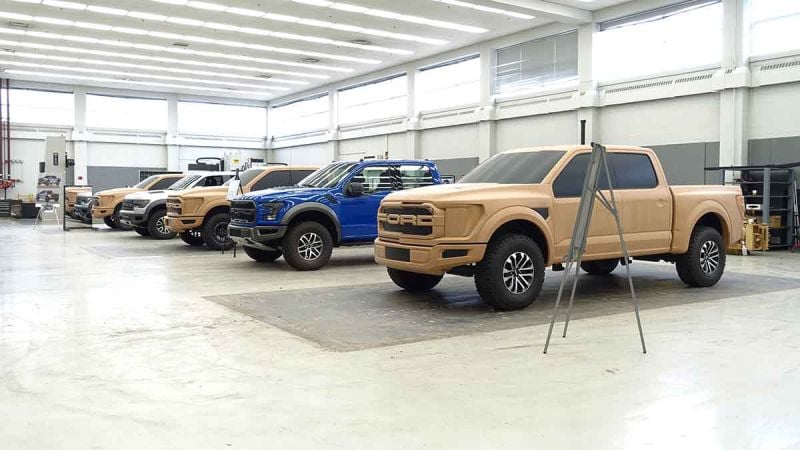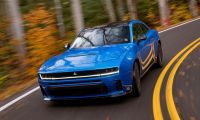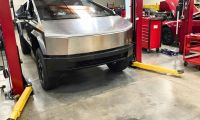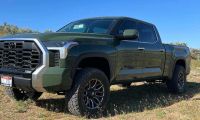When Ford revealed the 2021 Raptor a couple weeks ago, much of the talk was about the 2021 version lacking a V8. We know that a V8 is coming to the off-road Raptor (next year) and that for the 2021 model year, the third-generation Raptor will have a high-output 3.5-liter Ecoboost engine.
We still don’t have pricing information or the official specs of the 2021 Raptor, but I was able to ask the principle designer of the Raptor some questions about what it was like working on such a muscle-oriented truck.
Check out this quick video showing the differences between the three generations of Raptors (from a design perspective).
Difference between first and second generation Ford Raptor
The first-generation Raptor, introduced in 2010, was designed to have a much wider look than the base F-150 pickup. Since this performance truck could be driven in the most grueling elements at high speed, similar to a trophy truck, it needed to have a Baja racer-like design. So designers stretched the grille, fenders and quarter panels to give it a more stable and superior appearance than a regular passenger truck.
However, this generation lacked in surface design, or the muscular lines that provide more character and greater expression.
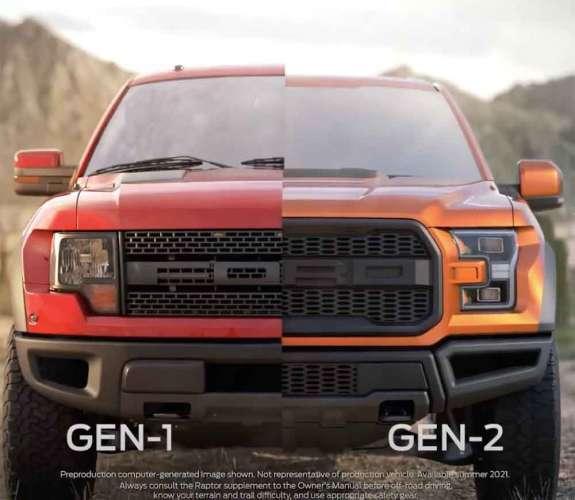
This is where the second-generation Raptor shined. Rather than treating the whole truck with flat sheet metal, the 2016 model added a more muscular, chiseled appearance with character lines on the hood, fenders and bodyside. Throughout the styling progression, it seemed as though the first-generation Raptor had decided to bulk up and weight-lift to achieve a more toned look. But unlike the first-generation, the second-generation truck walked slightly away from its desert racing roots in terms of its front end appearance. It did not offer much visual width, with a shortened grille featuring body-colored fascia pieces positioned between grille and headlamps.
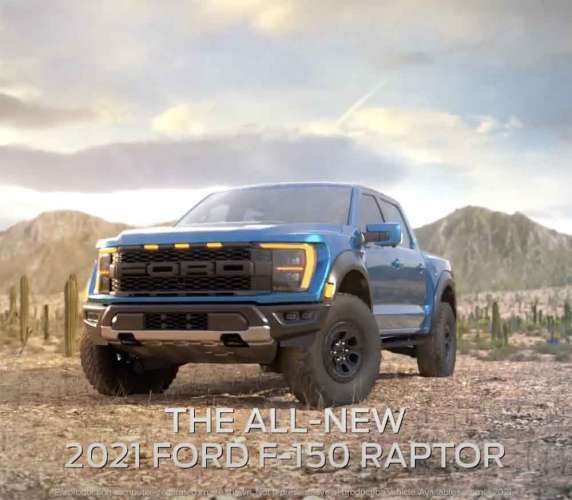
What is new for the 2021 Ford Raptor?
The all-new 2021 F-150 Raptor offers the best of both worlds. Ford truck designers worked to stay true to its desert racing heritage with an aggressive, yet agile new appearance. Once again the grille is stretched out, as is the “Ford” lettering graphic, which appears connected to the headlamps as one strong face, just like a Baja race truck. The bumper design is pulled outward to give Raptor a wider, more stable appearance.
The surface design of the all-new F-150 Raptor continues its legacy with a defined, muscular treatment, including new bodyside feature lines that come off the wheel lip moldings. Hood, fenders, front fascia and bodyside all feature toned character lines that best evoke its off-road capabilities, making the 2021 F-150 Raptor not only a beast from an engineering perspective, but from a design perspective as well.
“We took key design learnings from previous F-150 Raptor trucks and created our best off-road racer yet,” said Ehab Kaoud, chief designer, Ford trucks. “Not only have we maximized width and sculpted the sheet metal so it looks indestructible, but F-150 Raptor now appears lighter and more nimble, looking as if it could fly across open desert.”
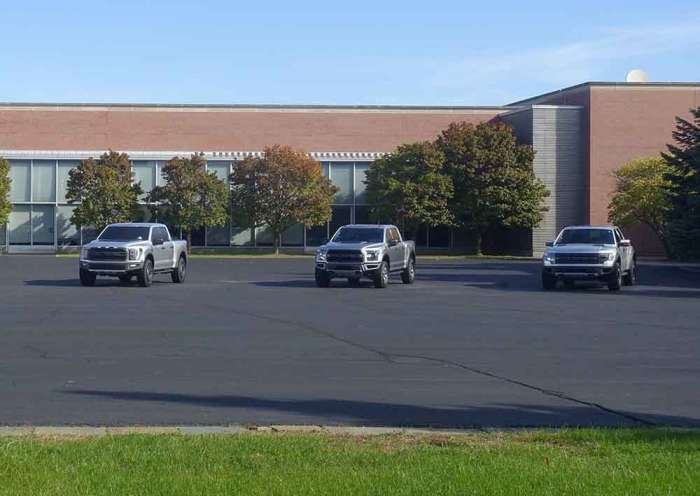
Adding Distinction To The 2021 Ford Raptor
I asked Ehab Kaoud how do you add distinction to a truck like the Raptor that needs to stand out and have personality but also tie it into the current generation F-150?
Kaoud: That is a great question, especially since we are beginning to see that there are competitor vehicles surfacing on the landscape. I think number one with any vehicle design is proportions. We do have this in the wider stance, the wheels and tire size ratio to each other, the wheel and tire in relation to the body itself, and of course, the ground clearance. By the way, all these attributes are not only visual, but functional attributes.
The next step is having a clear vision of what the Raptor is; Raptor is a desert racer, not a rock crawler. Understanding this, we can begin to formulate the visual messaging. Looking at racers flying through Baja, you would see that these trucks are light on their wheels. Based on this we sculpted the body side to give that impression. The sculpted undercuts that brings at the front of each wheel lip fading as they come truck rearward. These features give the connotation of speed, making the truck look dynamic and visually lighter.
The design of the front grille, if you noticed, we opted to go coast-to-coast grille on the new Raptor. This gives the vehicle a much wider perception. The skid plate is also much wider than the predecessor. All of these are elements that equate to the desert racing proposition.
These elements are enhanced with lighting technologies that pushes the modernity aspect of the vehicle to the next level. The upside down “L” shape turn signal which you will notice in your rearview mirrors when a Raptor overtakes you. The lighting tech does not stop there, but if you notice the 3 marker lights on top of the grille, and on the corner of each Raptor are not the normal single LED any longer, but more of a homogenous light blade. This gives the Raptor and even more identifiable look.
Next, of course are the vents, which are found on the fender and the hood. As with any of our trucks, and more so for the idea of being a desert racer, these vents are functional parts -- they aren’t there for aesthetics only. That is something we are very proud of as a Ford Truck Design Team. That is, form following function.
What do you think of the 2021 Raptor as far as the looks? Is it bold enough with enough of its own personality? I think it looks outstanding and certainly stands out from the 14th-generation a lot. I’ve professed my love of the second-generation Raptor before, and having not driven or even seen the third-generation up close yet, I can’t declare my undying love just yet. But I like what I see for sure. Leave me your thoughts by leaving a comment below.
Jimmy Dinsmore has been an automotive journalist for more than a decade and been a writer since the high school. His Driver’s Side column features new car reviews and runs in several newspapers throughout the country. He is also co-author of the book “Mustang by Design” and “Ford Trucks: A Unique Look at the Technical History of America’s Most Popular Truck”. Also, Jimmy works in the social media marketing world for a Canadian automotive training aid manufacturing company. Follow Jimmy on Facebook, Twitter, at his special Ford F-150 coverage on Twitter and LinkedIn. You can read the most of Jimmy's stories by searching Torque News Ford for daily Ford vehicle report.



